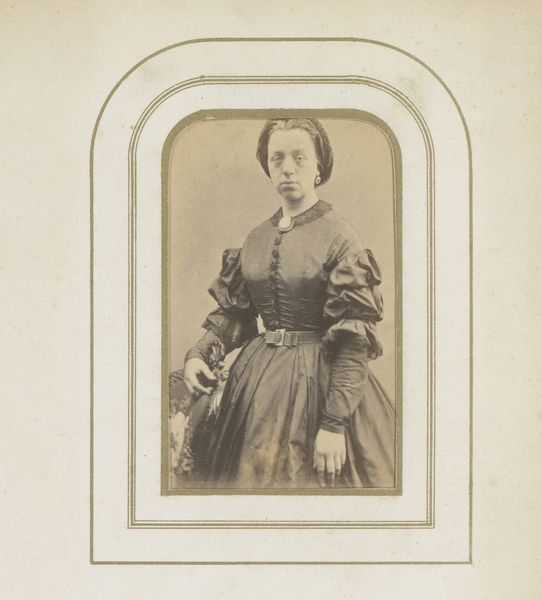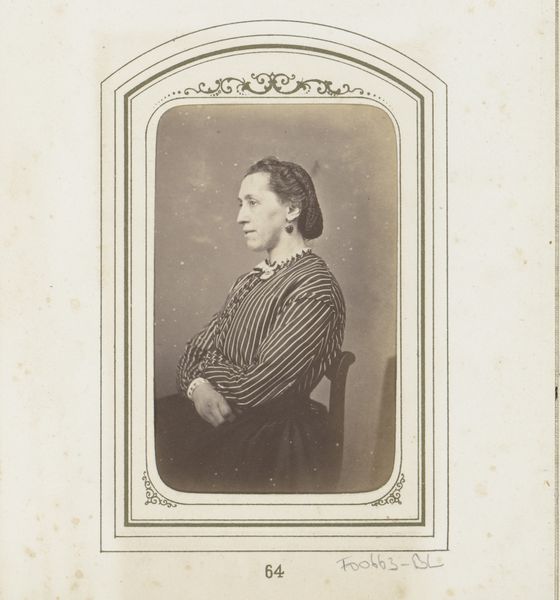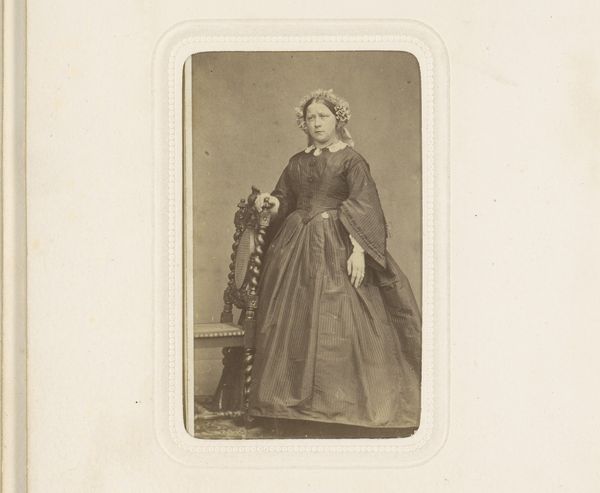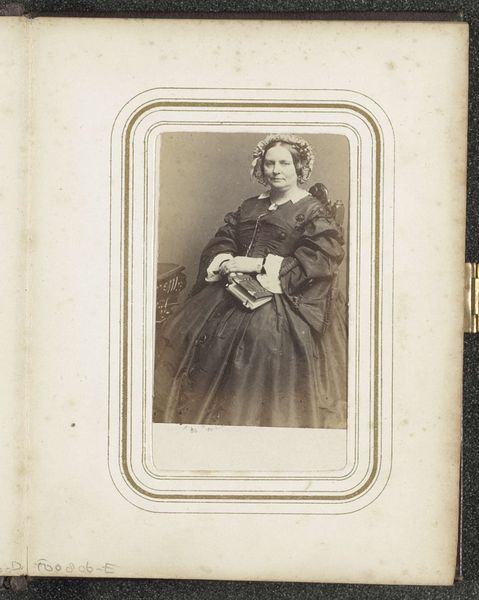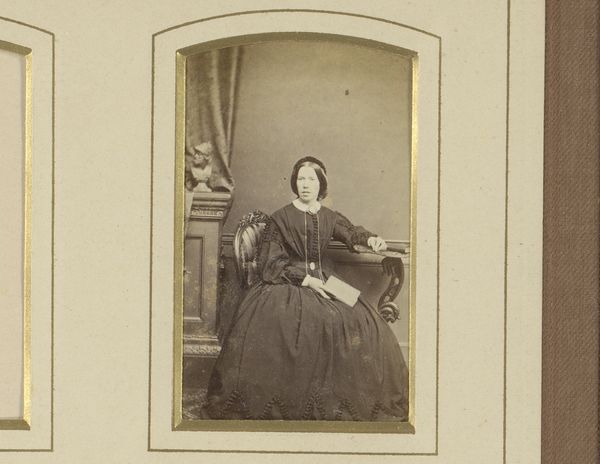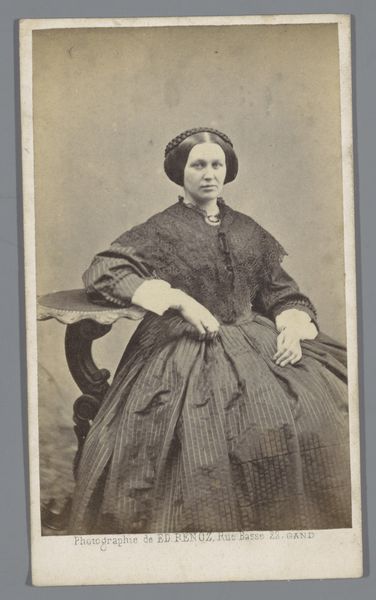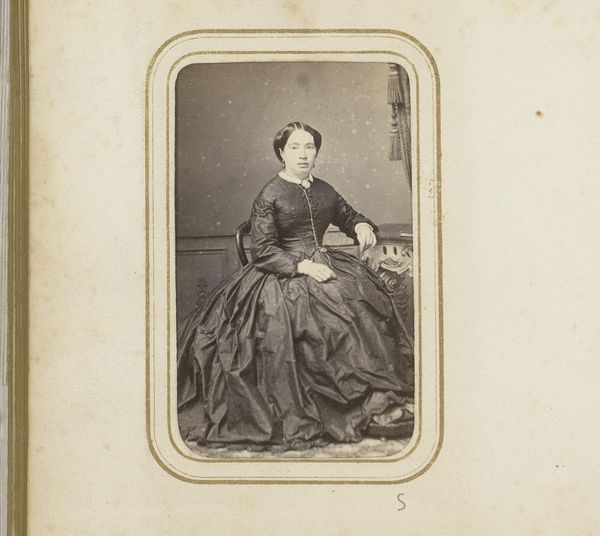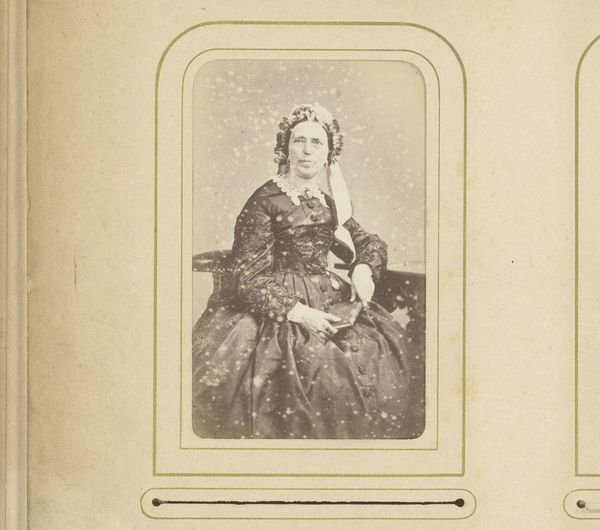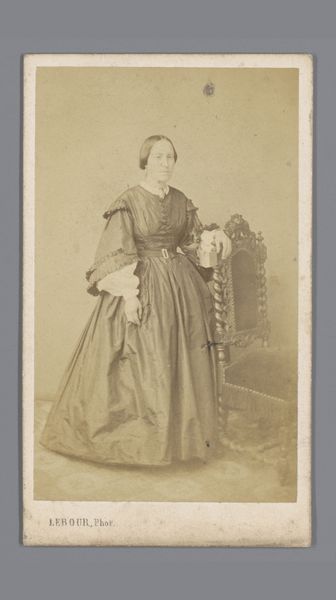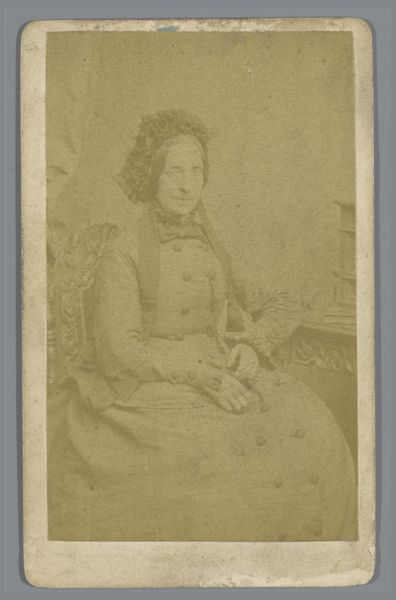
Portret van Sophia Frederica Mathilda, koningin der Nederlanden 1855 - 1875
0:00
0:00
mauritsverveer
Rijksmuseum
photography, albumen-print
#
portrait
#
photography
#
historical photography
#
history-painting
#
albumen-print
Dimensions: height 63 mm, width 99 mm
Copyright: Rijks Museum: Open Domain
Maurits Verveer made this photographic portrait of Queen Sophia Frederica Mathilda of the Netherlands, using paper and a chemical process. Photography in the 19th century was as much craft as science. Each print was a unique artifact, the result of careful darkroom work and an understanding of the materials at hand. What is striking is the contrast with painting. Here, there's no impasto, no brushwork, only the subtle gradations of light and shadow captured on a chemically treated surface. This image reflects a society that was rapidly industrializing. Photography democratized portraiture, making it accessible to a wider segment of the population beyond the elite who could afford painted portraits. But it also represents a new kind of labor: the photographer as a skilled technician. The production of photographs, from the preparation of the chemicals to the final print, involved a range of specialized tasks, reflecting the division of labor characteristic of industrial capitalism. This photograph compels us to consider the cultural and social implications of this shift, and to appreciate the craft involved in early photography.
Comments
No comments
Be the first to comment and join the conversation on the ultimate creative platform.
